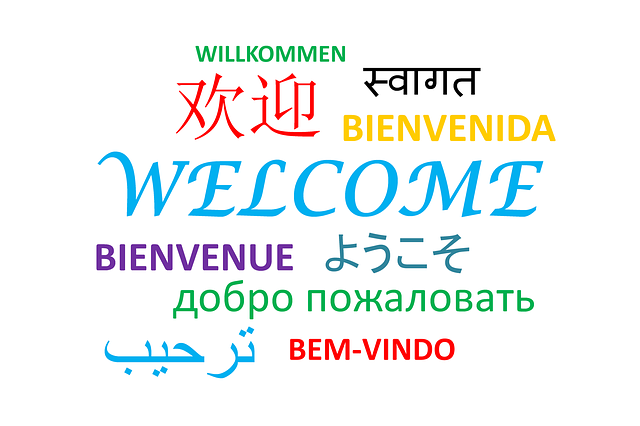Spanish (Español)
1. Word Overview
- Native phrase: ¿Sabes lo que dice esto?
- English translation: Do you know what this says?
- Part of speech: Verb phrase + relative clause
- IPA pronunciation: /ˈsaβes lo ke ˈdiθe ˈesto/ (Spain) or /ˈsaβes lo ke ˈdise ˈesto/ (Latin America)
2. Example Sentence
- Spanish: ¿Sabes lo que dice esto en la etiqueta?
- English: “Do you know what this says on the label?”
- Tip: Dice (he/she/it says) refers to the text. The structure uses lo que (“what”).
3. Mini Grammar/Culture Note
You can also hear ¿Sabes qué dice esto? —a shorter form common in informal speech. Both are widely understood.
4. Daily Practice Challenge
Speaking prompt: Show a friend some text (e.g., a sign or screen) and ask: ¿Sabes qué dice esto?
Italian (Italiano)
1. Word Overview
- Native phrase: Sai cosa c’è scritto qui?
- English translation: Do you know what is written here?
- Part of speech: Verb phrase + clause
- IPA pronunciation: /sai ˈkɔːza tʃɛ ˈskritto kwi/
2. Example Sentence
- Italian: Sai cosa c’è scritto qui sotto?
- English: “Do you know what is written down here?”
- Tip: C’è scritto literally means “there is written”—a natural way to ask about text.
3. Mini Grammar/Culture Note
Italians often say Sai cosa significa…? for asking meaning rather than literal text, so choose depending on your context.
4. Daily Practice Challenge
Writing prompt: Write a note and ask someone: Sai cosa c’è scritto qui?
Portuguese (Português)
1. Word Overview
- Native phrase: Você sabe o que está escrito aqui?
- English translation: Do you know what’s written here?
- Part of speech: Verb phrase + clause
- IPA pronunciation: /voˈse ˈsabi u ki isˈtaː esˈkɾitu aki/
2. Example Sentence
- Portuguese: Você sabe o que está escrito neste aviso?
- English: “Do you know what is written on this notice?”
- Tip: Está escrito is commonly used for asking about printed or written text.
3. Mini Grammar/Culture Note
In Brazil, a more casual version is Sabe o que está escrito aqui? dropping você.
4. Daily Practice Challenge
Listening activity: Read a short sign aloud and ask: Você sabe o que está escrito aqui? Record and review your pronunciation.
German (Deutsch)
1. Word Overview
- Native phrase: Weißt du, was hier steht?
- English translation: Do you know what is written here?
- Part of speech: Verb phrase + clause
- IPA pronunciation: /vaɪ̯st du vas hiːɐ̯ ʃteːt/
2. Example Sentence
- German: Weißt du, was hier auf der Tafel steht?
- English: “Do you know what is written here on the board?”
- Tip: Steht (“stands”) refers to words on a sign or board. Weißt du… is standard casual form.
3. Mini Grammar/Culture Note
For formal or unfamiliar people, use Wissen Sie, was hier steht? (Polite “you”).
4. Daily Practice Challenge
Speaking prompt: Look at a written notice and ask aloud: Weißt du, was hier steht?
French (Français)
1. Word Overview
- Native phrase: Sais-tu ce que ça dit ?
- English translation: Do you know what this says?
- Part of speech: Verb phrase + clause
- IPA pronunciation: /sɛ ty sə kə sa di/
2. Example Sentence
- French: Sais-tu ce que ça dit sur l’étiquette ?
- English: “Do you know what this says on the label?”
- Tip: Sais-tu is inversion form—common in informal questions.
3. Mini Grammar/Culture Note
Informal spoken French might use Tu sais ce que ça dit ? (subject-verb normal order). Meaning remains identical.
4. Daily Practice Challenge
Writing prompt: Show someone a short note and ask in French: Sais-tu ce que ça dit ?
Multilingual Bonus Comparison
| Language | Phrase | Pronunciation |
|---|---|---|
| Spanish | ¿Sabes lo que dice esto? | /ˈsaβes lo ke ˈdiθe ˈesto/ |
| Italian | Sai cosa c’è scritto qui? | /sai ˈkɔːza tʃɛ ˈskritto kwi/ |
| Portuguese | Você sabe o que está escrito aqui? | /voˈse ˈsabi u ki isˈtaː esˈkɾitu aki/ |
| German | Weißt du, was hier steht? | /vaɪ̯st du vas hiːɐ̯ ʃteːt/ |
| French | Sais-tu ce que ça dit ? | /sɛ ty sə kə sa di/ |
Final Daily Practice Challenge
Choose two languages and:
- Speak: Ask the question while pointing at text (e.g., on a screen, sign, or label).
- Write: Compose your own sign or note and ask: “Do you know what this says?” in each language.
Build confidence by using this practical phrase in real situations

